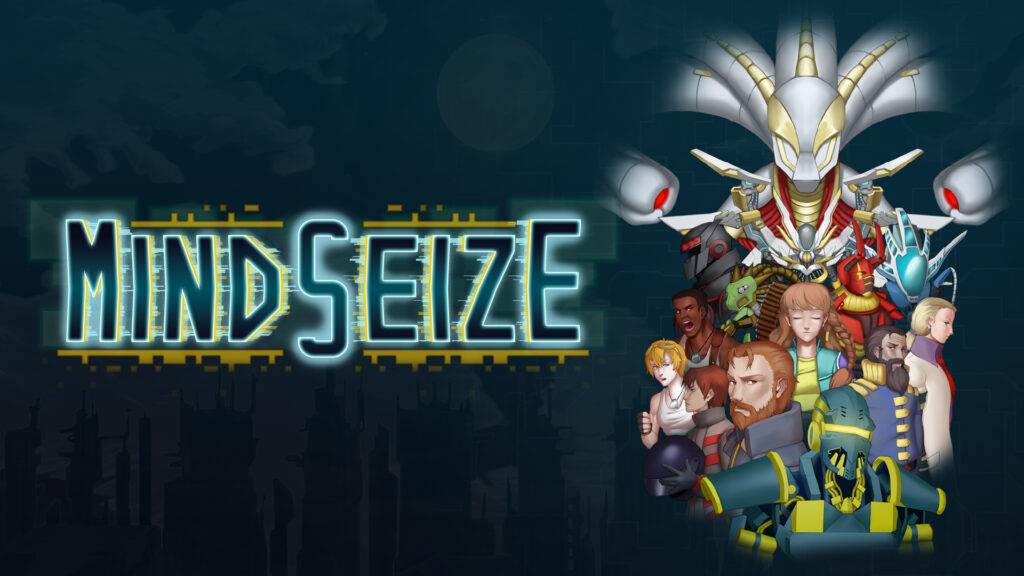
Within the indie gaming scene, one of the absolute top genres to make a game in these days is the so-called “Metroidvania” style. Chances are you’ve played some of the heavy hitters in this genre, games like Hollow Knight, Oni and the Blind Forest, or Axiom Verge. With a constant flow of Metroidvanias creeping out of the cracks, it’s hard not to get bored by the sheer volume of titles. Every one of them takes a fair amount of time too, so most gamers are hard-pressed to even try them all as the pace of releases keeps steadily increasing. But these games are fun for a reason. They’re entertaining, they allow devs to re-use resources by forcing players to backtrack, and they tend to feel more like you’re actually exploring something. It’s a solid gameplay style that’s constantly getting fine-tuned and experimented with.
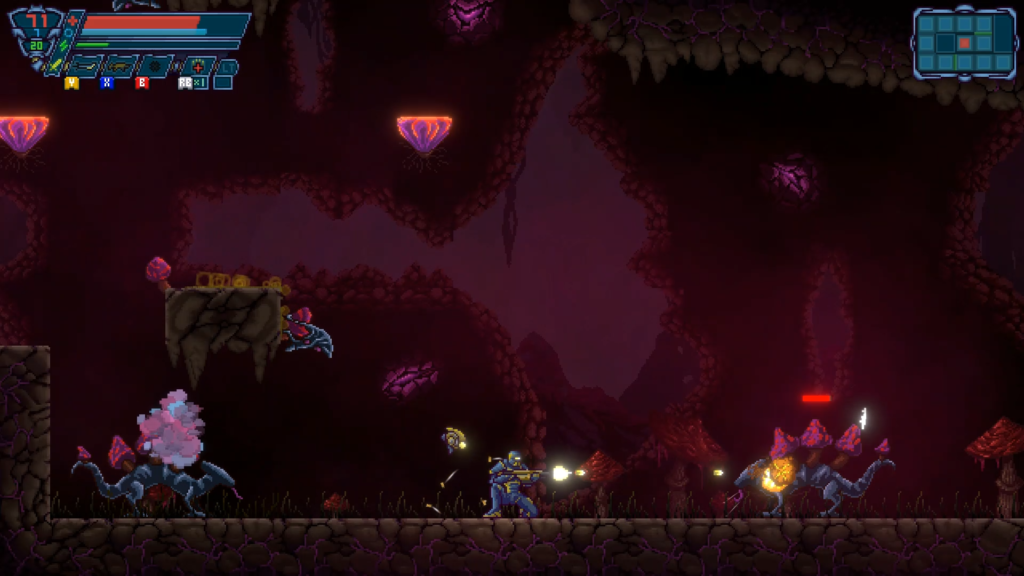
New on the ever-expanding slate of Metroidvanias is Mindseize from Kamina Dimension, published by First Press Games. This is a sci-fi based game with an interesting story premise where (and this is purposely re-written to sound extra silly), space criminals called The Ascended are jacking people’s minds for nefarious purposes. You play a man whose daughter has been, well, mindseized, likely because you’re investigating this organization. Unfortunately, you’re badly injured and confined to a wheelchair during the course of your investigation, so the only way to save your daughter is to enter a robotic suit and transfer your mind into it. While it may sound silly, the introductory sequence is rather compelling and certainly manages to draw you in. The animation in the cut scenes isn’t the fanciest, but it gets the job done. The actual script borders on 1960s comic book dialogue, but it’s also strangely endearing, like a reminder of the plots of old NES and SNES games that originated this genre. By the time things get moving, chances are you’re ready to save your daughter!
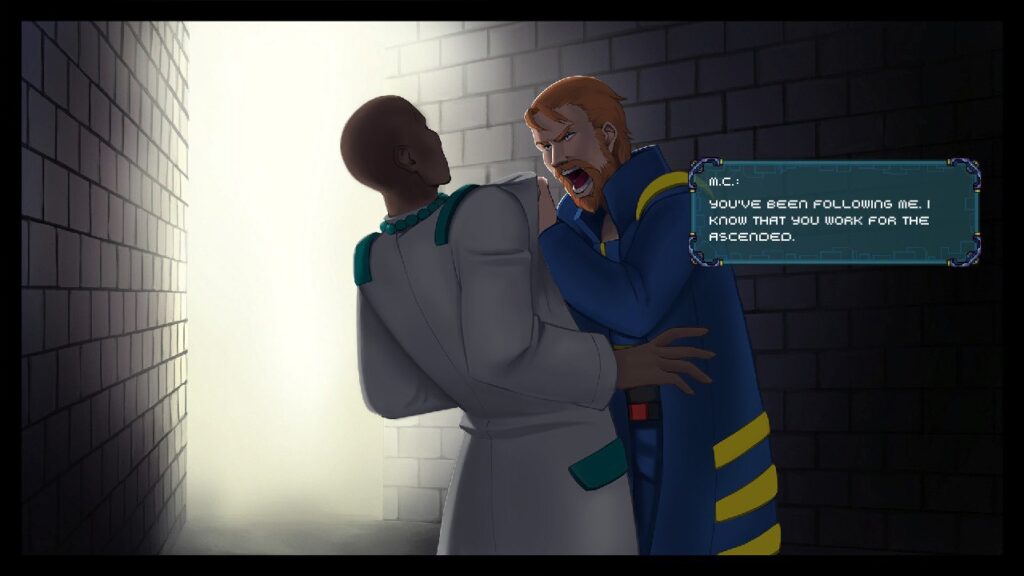
Once you’re in your robot jumpsuit, the game begins in earnest. Mindseize has fairly large stages on various planets as you track The Ascended and try to stop their evil plan. Explore each, find the power-ups, fight the bosses, and move to the next planet. Toss in a bit of flavor and plot like rainbow sprinkles and you’ve got yourself a game! But what kind of game is it? Almost immediately upon playing Mindseize, you’ll find yourself wondering what’s missing. You have a robot suit. You have melee weapons. You have ranged weapons, jump abilities, ledge hanging, a variety of enemies, power ups, hidden items, and fairly creative creature design. But the whole time you’re playing it feels like something is simply not there. That spark that really gives a game its personality is simply missing here. The game checks all the right boxes, but it’s the video game equivalent of getting a C- in calculus. Sure, you passed, but you didn’t really get all the material, you just got by. And that’s what Mindseize really feels like. A title that’s just getting by without that creative vitality that brings a game to the next level.

It’s hard to even define what exactly is wrong with Mindseize, because in many ways, there isn’t anything. It does everything that it should, but it’s the little things. The flat color palettes. The somewhat generic music. The fairly predictable and simplistic boss patterns. The NES-style coins that drop all over the ground which you have to collect from enemies and are required for upgrades. It’s all these little things and lots more that add up to a sub-standard Metroidvania experience. The gameplay itself is responsive, but your character doesn’t behave exactly as you’d expect, leading to unnecessary damage and deaths. Running is a bit too fast or targeting with guns doesn’t do enough damage, for example. Everything works, but it feels off, like the devs got distracted watching cartoons in the middle of coding or something.

That feeling carries on into the control schemes and gameplay as well. You move quickly in Mindseize, but the controls feel loose and inaccurate. It’s easy to hit a jump one time and miss it the next, and the precision responses required of even minor enemies end up dealing a lot of damage that they simply shouldn’t. Some of that might be player skill related, but there are definitely some timing issues with controller response as well. Melee weapons are especially prone to misses and it’s too easy to stand too close to an enemy and take a hit due to a poorly defined hitbox that allows for enemy crowding. Button mapping is good with angled gun firing and alternate attacks on the shoulder buttons, as well as the ability to constantly fire while jumping and using your sword, but even this feels forced, adding to the sense of unreality of the game and severely limiting the immersion factor. Jumps are difficult and easy to miss, even early on in the game and require a surprising amount of precision, often resulting in a number of continues that probably shouldn’t happen.

There are some solid boss fights in Mindseize when you manage to get to them. Mini-bosses, end stage bosses, the works. The bosses are creative, often quite fast, and well-thought out. Unfortunately, even if you can see the patterns, they’re still a bit more challenging than you might expect, as you’re fighting the controls more than perhaps you should be. Even the very first mini-boss, a treant sort of fellow, ends up taking a few tries just due to a combination of lack of experience and a degree of imprecision in the jump mechanics. This is no Axiom Verge. Other bosses will slaughter you wholesale, forcing you to challenge them over and over until you manage to decipher their patterns and narrowly eke out a win. It’s frustrating because deaths can happen so fast that you barely get a chance to fight and using nanobots to heal slows you down so badly that you often take extra hits. Only a tiny sliver of life bar usually stands between success and the more likely failure as you’re working your way through the bosses.
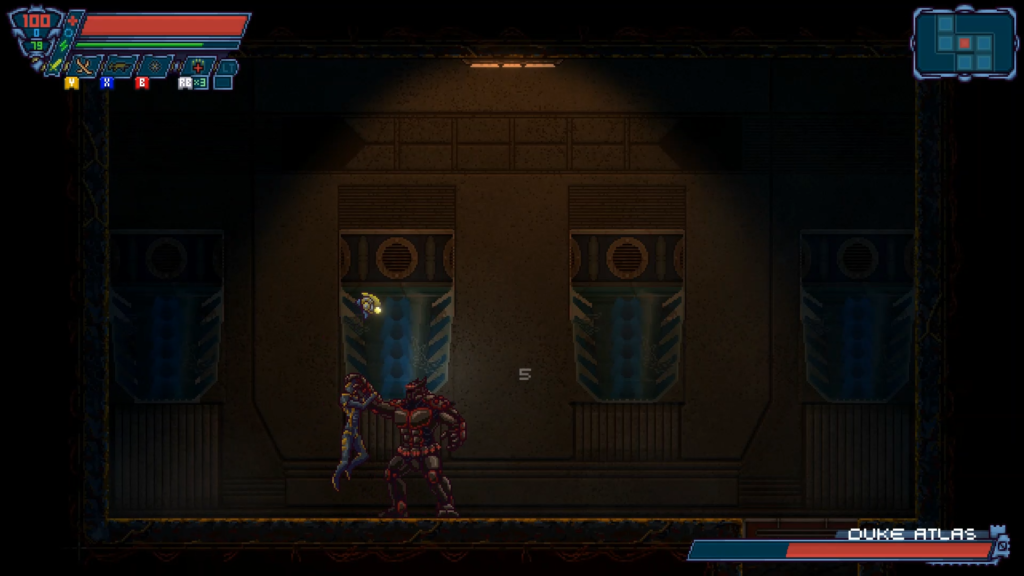
In between these worlds, you head back to your ship and get to motor around in a surprisingly fast and swank wheelchair, talking to your fellow resistance members. This allows you to add a bit more depth to the backstory, but unfortunately, it’s not all that interesting. Characters don’t have a lot to say, and you’ll end up just moving on fairly quickly. They do give you the option of more upgrades for your suit, but you’ll have to kill hordes of enemies to generate the money to buy those upgrades, so it’s more than a bit of a tease unless you’ve been grinding, something that shouldn’t even be necessary in a game of this style. The upgrades eventually make you a powerhouse, compensating for some of the control issues, but it’s a struggle to get them all, adding to the frustration while you play.
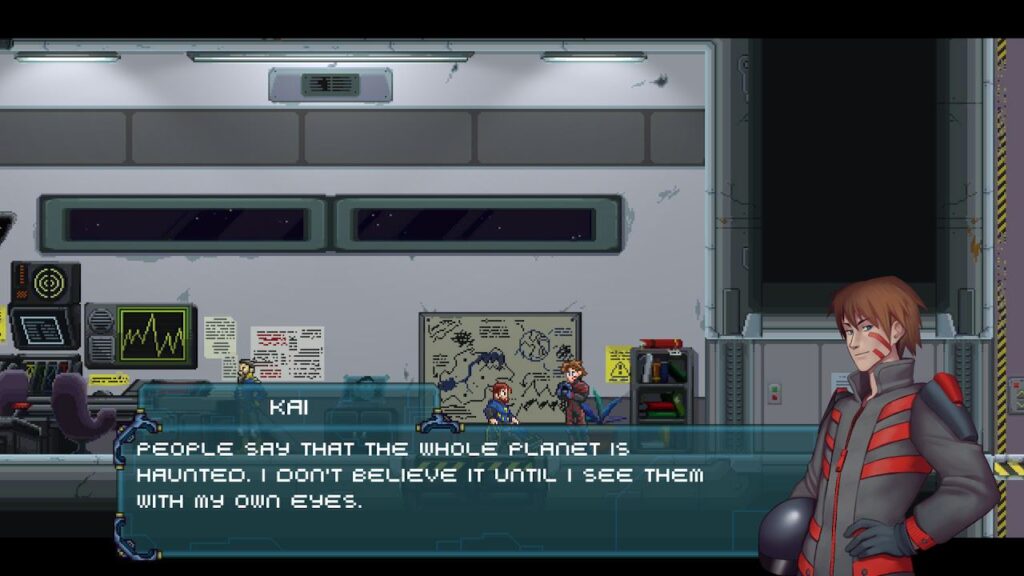
As mentioned earlier, the visuals are a bit flat in Mindseize. It’s not that they’re bad, more that they simply don’t have as much flair as one would expect for a game like this. Backgrounds are detailed, but also bland, and the whole game has the feel of an old 16 bit title, even though technically it looks far better. Add in the low-budget comic style animation and you just don’t have a lot to impress. The character designs are great, the enemy designs are solid, but something just doesn’t gel the way it should. Perhaps it’s the level design itself or the consistent re-use of textures in each world you visit, but there’s a bland uniformity at work here that’s a noticeable detriment to the game itself. Sound is similar in that it’s nothing particularly special. Sound effects seem fairly standard but well-executed in Mindseize and the soundtrack is good but nothing that you’ll end up tapping your toe to or fondly reminiscing about.

Mindseize is a Metroidvania with a solidly average core gameplay experience with a bevy of minor flaws that make the overall play fairly tedious. It’s not bad. It’s not good. It’s just average. A mid-range filler title while you wait for something better to come along. At a price of $23.99, it’s a bit more expensive than it should be, honestly. Coming out at the $10-12 range would have lowered expectations a bit and made the flaws in the game more acceptable, but at almost $25, you’re really not getting what you paid for in terms of quality. It’s a longer game than you might expect at 10-12 hours, maybe more if you’re a hard-core completionist, but still not a huge bang for your buck. If it goes on sale, you’ll probably fill a few hours with this one, but the average player will likely as not find it a little boring and drop it well before the ending. Don’t expect Mindseize to capture your imagination, as chances are it won’t.
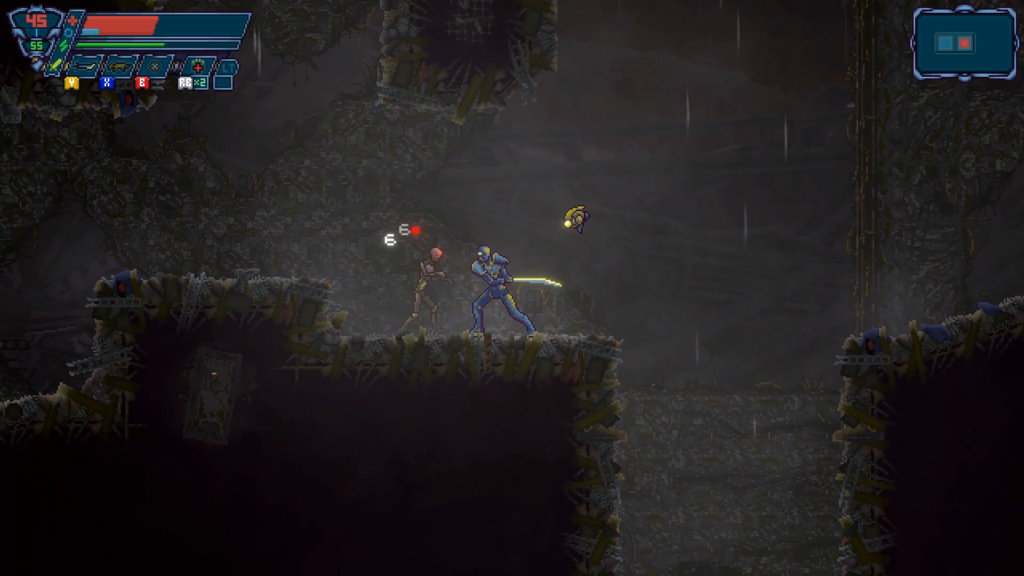
This review was based on a digital copy of Mindseize provided by the publisher. It was played on a Nintendo Switch in both docked and undocked modes and played equally well in both. Mindseize is also available for PC on Steam.

